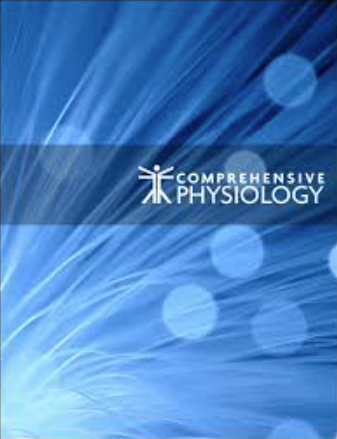Alemayehu H Jufar, Yugeesh R Lankadeva, Clive N May, Andrew D Cochrane, Bruno Marino, Rinaldo Bellomo, Roger G Evans
求助PDF
{"title":"体外循环期间肾脑缺氧与炎症。","authors":"Alemayehu H Jufar, Yugeesh R Lankadeva, Clive N May, Andrew D Cochrane, Bruno Marino, Rinaldo Bellomo, Roger G Evans","doi":"10.1002/cphy.c210019","DOIUrl":null,"url":null,"abstract":"<p><p>Cardiac surgery-associated acute kidney injury and brain injury remain common despite ongoing efforts to improve both the equipment and procedures deployed during cardiopulmonary bypass (CPB). The pathophysiology of injury of the kidney and brain during CPB is not completely understood. Nevertheless, renal (particularly in the medulla) and cerebral hypoxia and inflammation likely play critical roles. Multiple practical factors, including depth and mode of anesthesia, hemodilution, pump flow, and arterial pressure can influence oxygenation of the brain and kidney during CPB. Critically, these factors may have differential effects on these two vital organs. Systemic inflammatory pathways are activated during CPB through activation of the complement system, coagulation pathways, leukocytes, and the release of inflammatory cytokines. Local inflammation in the brain and kidney may be aggravated by ischemia (and thus hypoxia) and reperfusion (and thus oxidative stress) and activation of resident and infiltrating inflammatory cells. Various strategies, including manipulating perfusion conditions and administration of pharmacotherapies, could potentially be deployed to avoid or attenuate hypoxia and inflammation during CPB. Regarding manipulating perfusion conditions, based on experimental and clinical data, increasing standard pump flow and arterial pressure during CPB appears to offer the best hope to avoid hypoxia and injury, at least in the kidney. Pharmacological approaches, including use of anti-inflammatory agents such as dexmedetomidine and erythropoietin, have shown promise in preclinical models but have not been adequately tested in human trials. However, evidence for beneficial effects of corticosteroids on renal and neurological outcomes is lacking. © 2021 American Physiological Society. Compr Physiol 11:1-36, 2021.</p>","PeriodicalId":10573,"journal":{"name":"Comprehensive Physiology","volume":"12 1","pages":"2799-2834"},"PeriodicalIF":5.2000,"publicationDate":"2021-12-29","publicationTypes":"Journal Article","fieldsOfStudy":null,"isOpenAccess":false,"openAccessPdf":"","citationCount":"11","resultStr":"{\"title\":\"Renal and Cerebral Hypoxia and Inflammation During Cardiopulmonary Bypass.\",\"authors\":\"Alemayehu H Jufar, Yugeesh R Lankadeva, Clive N May, Andrew D Cochrane, Bruno Marino, Rinaldo Bellomo, Roger G Evans\",\"doi\":\"10.1002/cphy.c210019\",\"DOIUrl\":null,\"url\":null,\"abstract\":\"<p><p>Cardiac surgery-associated acute kidney injury and brain injury remain common despite ongoing efforts to improve both the equipment and procedures deployed during cardiopulmonary bypass (CPB). The pathophysiology of injury of the kidney and brain during CPB is not completely understood. Nevertheless, renal (particularly in the medulla) and cerebral hypoxia and inflammation likely play critical roles. Multiple practical factors, including depth and mode of anesthesia, hemodilution, pump flow, and arterial pressure can influence oxygenation of the brain and kidney during CPB. Critically, these factors may have differential effects on these two vital organs. Systemic inflammatory pathways are activated during CPB through activation of the complement system, coagulation pathways, leukocytes, and the release of inflammatory cytokines. Local inflammation in the brain and kidney may be aggravated by ischemia (and thus hypoxia) and reperfusion (and thus oxidative stress) and activation of resident and infiltrating inflammatory cells. Various strategies, including manipulating perfusion conditions and administration of pharmacotherapies, could potentially be deployed to avoid or attenuate hypoxia and inflammation during CPB. Regarding manipulating perfusion conditions, based on experimental and clinical data, increasing standard pump flow and arterial pressure during CPB appears to offer the best hope to avoid hypoxia and injury, at least in the kidney. Pharmacological approaches, including use of anti-inflammatory agents such as dexmedetomidine and erythropoietin, have shown promise in preclinical models but have not been adequately tested in human trials. However, evidence for beneficial effects of corticosteroids on renal and neurological outcomes is lacking. © 2021 American Physiological Society. Compr Physiol 11:1-36, 2021.</p>\",\"PeriodicalId\":10573,\"journal\":{\"name\":\"Comprehensive Physiology\",\"volume\":\"12 1\",\"pages\":\"2799-2834\"},\"PeriodicalIF\":5.2000,\"publicationDate\":\"2021-12-29\",\"publicationTypes\":\"Journal Article\",\"fieldsOfStudy\":null,\"isOpenAccess\":false,\"openAccessPdf\":\"\",\"citationCount\":\"11\",\"resultStr\":null,\"platform\":\"Semanticscholar\",\"paperid\":null,\"PeriodicalName\":\"Comprehensive Physiology\",\"FirstCategoryId\":\"3\",\"ListUrlMain\":\"https://doi.org/10.1002/cphy.c210019\",\"RegionNum\":2,\"RegionCategory\":\"医学\",\"ArticlePicture\":[],\"TitleCN\":null,\"AbstractTextCN\":null,\"PMCID\":null,\"EPubDate\":\"\",\"PubModel\":\"\",\"JCR\":\"Q1\",\"JCRName\":\"PHYSIOLOGY\",\"Score\":null,\"Total\":0}","platform":"Semanticscholar","paperid":null,"PeriodicalName":"Comprehensive Physiology","FirstCategoryId":"3","ListUrlMain":"https://doi.org/10.1002/cphy.c210019","RegionNum":2,"RegionCategory":"医学","ArticlePicture":[],"TitleCN":null,"AbstractTextCN":null,"PMCID":null,"EPubDate":"","PubModel":"","JCR":"Q1","JCRName":"PHYSIOLOGY","Score":null,"Total":0}
引用次数: 11
引用
批量引用

 求助内容:
求助内容: 应助结果提醒方式:
应助结果提醒方式:


